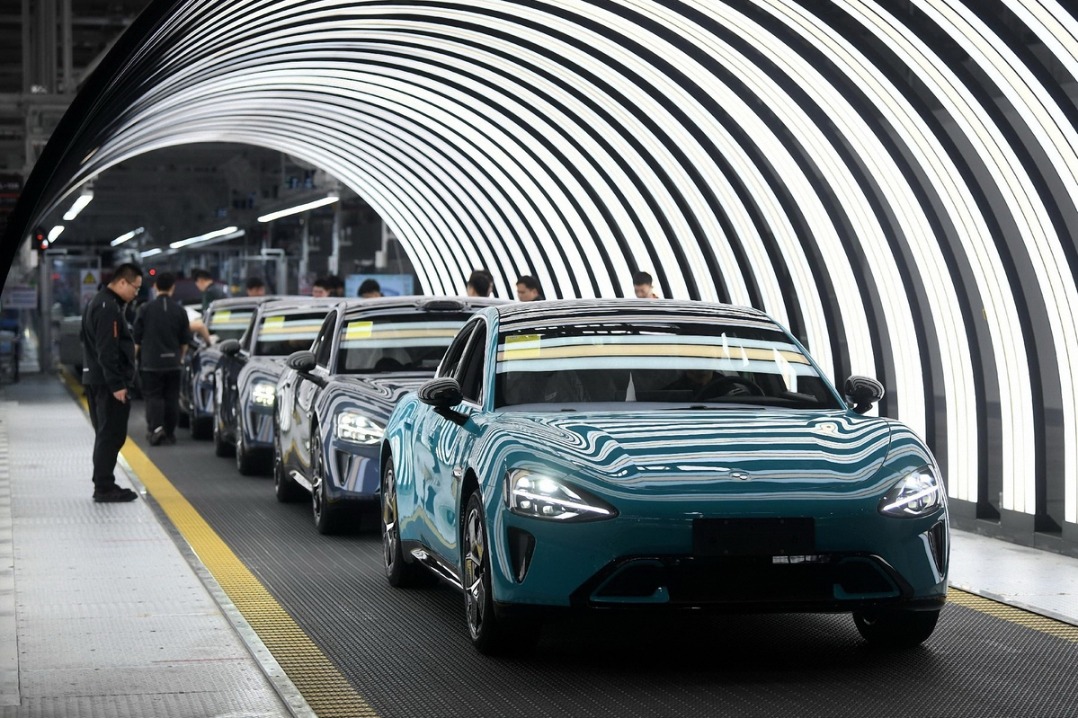Delivering a greener future
By XUE LULU | China Daily Global | Updated: 2020-03-18 08:01

Proactive changes are called for to reduce transport emissions
China's transport emissions-which primarily involve road, rail, air and marine transportation-are the second-largest globally, after those of the United States. Even more alarming is that while the emissions from other sectors, such as the industrial sector are going down, transport emissions are on the rise, posing a major challenge to efforts to reduce emissions in line with the Paris Agreement.
Within the transport sector, road transport in China-private cars and freight vehicles-account for 70 percent of transport-related emissions. And the transport sector is also a pillar of China's economic growth as vehicle manufacturing and freight logistics account for approximately 9 percent of China's GDP. Decarbonization of the road transport sector will therefore create a cleaner and healthier future, without compromising jobs and the country's economic competitiveness.
A study by the World Resources Institute concludes that recent technological advances and policy efforts by the Chinese government will fast track China's road transport sector to attain its emissions peak before 2035, outperforming China's National Determined Contribution commitment. When China submitted its NDC goals in 2015, new energy vehicles such as electric vehicles had not gained the market momentum they enjoy now; therefore, it was forecast that emissions from China's road transport sector would peak between 2035 and 2040. Yet sales of new energy vehicles have increased rapidly, quadrupling from 580,000 in 2015 to 2.6 million in 2018, and China is now the world's largest market for NEVs. China aspires to further promote NEVs and attain a 25 percent target in annual sales in 2025, a significant rise from 5 percent. The national push is also fueled by local ambitions. In 2019, Hainan province became the first in the country to set a date by which all sales of internal combustion engine vehicles are to cease.
Nonetheless, under the stated policies, after the emissions peak, road transport's emissions in China will experience only a small decline, if no further proactive measures are taken. The resulting 1.3 billion tonnes of CO2 emissions from road transport in 2050, equivalent to Japan's all-sector emissions in 2017, will pose roadblocks to attain the core goal of the Paris climate agreement: preventing global temperatures from soaring past a disastrous 2 C of warming.
One enhanced effort includes further electrifying private cars. The World Resources Institute estimates that electrifying 75 percent of China's light-duty vehicle stocks-primarily family cars-by 2050 would avoid 230 million tonnes of CO2 emissions, a reduction of 18 percent compared to the emissions under stated policies. Achieving these targets would also require a major shift to clean energy sources. Currently, 72 percent of the electricity generation in China is sourced from coal that limits electric vehicles' emissions reduction potential.
But even more important, China needs to tackle heavy-duty freight vehicles. Annual emissions from heavy-duty vehicles will account for 64 percent of the transport sector's emissions by 2050, surpassing light duty vehicles to become the largest source. Besides greenhouse emissions, air pollutants from trucks also represent a major threat to clean air and public health. Although heavy-duty vehicles constitute a small fraction of the vehicle fleet, they are more difficult to decarbonize. Unlike passenger vehicles, zero-emission electric or hydrogen fuel cell trucks and trailers do not look like becoming a technologically viable and cost-competitive option any time soon. The difficulty is further compounded by limited information integration, technology deployment, and policy coverage for heavy trucks. For example, because of the lack of standardization and policy incentives, integration between truck and rail services, a common practice in developed countries to ship bulk goods is weak. The country's fragmented truck sector is fraught with low utilization of trucks: vehicle mileage traveled for trucks in China only halves that in the European Union, due to the absence of demand information and systematic planning.
Despite their high energy intensity, trucks dominate the market for freight transportation, consisting of 76 percent of China's total freight weight. Policy incentives and technology advances thus offer tremendous emissions reduction potential in this sector. The study by the World Resources Institute shows a transition from high-emissions road freight to low-emissions rail or waterway freight would deliver a reduction in CO2 of around 432 million tonnes, the largest mitigation potential among all measures. Transitioning to low-carbon vehicle technologies such as electric trucks would also result in a maximum CO2 reduction of 197 million tonnes. Other effective mitigation measures also include reducing the freight demand through local sourcing or 3D printing, and improving truck utilization with information technologies.
Both vehicle manufacturing and freight logistics are pillars supporting China's economic growth. Either vehicle electrification or reforming the freight sector will therefore carry high stakes and influence traditional businesses. But the growth opportunities offered by the mitigation efforts are significant. Leading businesses in China have been presciently embracing changes. For example, BYD, one major electric vehicle manufacturer, is electrifying most of its vehicle models. Cainiao smart logistics network has formed an inclusive platform that uses information technology to help carriers, warehouse owners, and third-party logistics companies to maximize the utilization of trucks.
Early and proactive actions taken by the Chinese government and businesses to reduce emissions in the transport sector are essential to successfully transition to a low-carbon economy.
The author is a research associate at the World Resources Institute. The author contributed this article to China Watch, a think tank powered by China Daily. The views do not necessarily reflect those of China Daily.
























